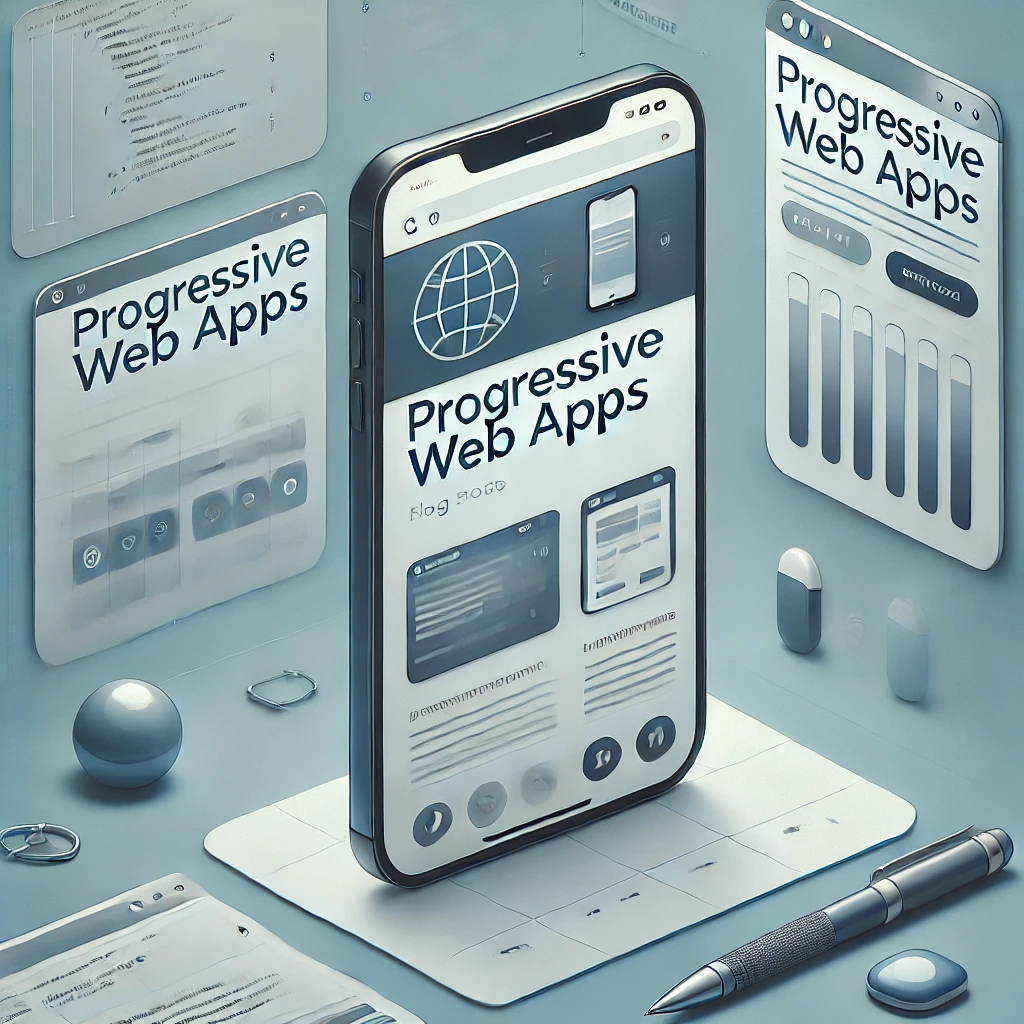
Build an App for Your Website: A Guide to Progressive Web Apps (PWAs)
Created on 9 November, 2024 • 627 views • 4 minutes read
Discover how Progressive Web Apps (PWAs) transform your website into a high-performing, app-like experience across all devices. This guide covers essentials from key features to core technologies that make PWAs a game-changer.
An Introduction to Progressive Web Apps (PWAs)
In an era where mobile experiences shape user engagement, businesses are constantly seeking ways to provide faster, more engaging interactions. Whether for e-commerce, social media, or educational platforms, users expect an app-like experience even on the web. Enter Progressive Web Apps (PWAs) – a blend of the web's reach and the native app's immersive experience, designed to bridge the gap between websites and mobile applications.
What Exactly Is a Progressive Web App (PWA)?
A Progressive Web App (PWA) is a web application that uses the latest web technologies to deliver an experience that feels like a native app. PWAs are built and enhanced with modern APIs to provide users with offline functionality, push notifications, and the ability to install the app directly on their home screen without the need for an app store download.
Key Characteristics of a PWA
Progressive: Built with progressive enhancement in mind, PWAs work on any device and in any browser, regardless of the user’s operating system.
Responsive Design: PWAs are designed to adapt seamlessly to various screen sizes, ensuring usability across desktops, tablets, and mobile devices.
Offline Capabilities: Through service workers, PWAs cache files to work offline or in areas with poor connectivity, providing continuous access to content.
App-Like Feel: PWAs mimic the look and feel of a native application, allowing users to interact with a web app as if it were an installed app.
Secure: PWAs must be served over HTTPS, providing a secure experience by default, which also allows for better trust between the app and its users.
Installable: PWAs give users the option to "install" the app on their devices, making it accessible from their home screens like any other app.
Linkable and Shareable: Since PWAs are still websites, they can be shared through URLs, allowing easy access without app store downloads.
Why Choose a PWA Over a Native App?
With the rise of PWAs, developers and businesses can build applications that offer the performance and capabilities of native apps with the reach of the web. Here are some reasons why PWAs are an attractive choice:
Enhanced User Engagement: PWAs offer push notifications to keep users engaged with timely updates, reminders, or announcements, much like a native app.
Better Performance: PWAs are optimized for speed, critical for reducing bounce rates and increasing user retention.
No Need for App Store Approval: PWAs are accessed through the browser, so they bypass app store approval processes.
Reduced Development Costs: Unlike native apps, PWAs don’t require separate codebases for iOS, Android, and the web.
Offline Access and Improved Reach: Service workers allow PWAs to function offline, valuable for users in areas with unreliable internet.
How Progressive Web Apps Work
To understand the magic behind PWAs, let’s dive into the core technologies that make them possible:
1. Service Workers
Service workers are JavaScript files that run in the background, independent of the website. They allow PWAs to cache assets (such as images, CSS, and JavaScript) for offline access.
Example:

2. Manifest File
The manifest file is a JSON file that provides metadata about the app, defining how it appears on the user’s home screen and determining its functionality.
Example of a manifest.json file:

3. HTTPS for Security
PWAs require HTTPS to ensure secure, encrypted data transfer. HTTPS not only secures user information but also allows service workers to function, making it an essential component for any PWA.
Enhancing Your PWA with QuickPanel Web Push Notifications
Progressive Web Apps deliver an app-like experience, but to maximize engagement, timely and relevant notifications can make a significant impact. QuickPanel allows you to easily add push notifications to your PWA, keeping users informed and engaged with your content even when they’re not actively browsing.
With QuickPanel, you can send customized, real-time updates that reach users directly on their devices, regardless of internet connectivity. This not only enhances the user experience but also boosts retention by encouraging users to return to your app.
Get started with QuickPanel to bring your PWA to life with powerful push notifications designed to increase user engagement and drive conversions. Learn more about how QuickPanel can transform your app's engagement strategy.
Building Your First Progressive Web App
Creating a basic PWA involves three main steps:
1. Set Up the Basic Web App
Create a simple HTML file as the foundation for your PWA. Add a manifest file, link it in your HTML, and set up the service worker.
2. Add a Service Worker for Offline Functionality

3. Test Your PWA in the Browser
Use Chrome’s DevTools (under the “Application” tab) to check if your PWA is installable and verify that it works offline.
Examples of Successful PWAs
Twitter Lite: Twitter’s PWA provides a fast, reliable experience, particularly in regions with slower internet speeds.
Pinterest: Pinterest’s PWA led to significant increases in time spent on the site, ad revenue, and user engagement.
Starbucks: Starbucks developed a PWA that allows customers to browse the menu and customize orders offline.
The Future of PWAs
As web technology continues to evolve, PWAs are expected to become more common and sophisticated. Google and other tech giants actively support PWAs, making them an increasingly important part of the digital landscape.
Conclusion
Progressive Web Apps represent a significant advancement in web development, combining the best features of web and mobile applications. They enable businesses to deliver fast, engaging, and secure experiences while reducing the costs and complexities associated with native app development.
Integrating solutions like QuickPanel with your PWA can take it a step further, ensuring your users stay engaged with real-time, personalized push notifications that drive repeat visits and build loyalty.